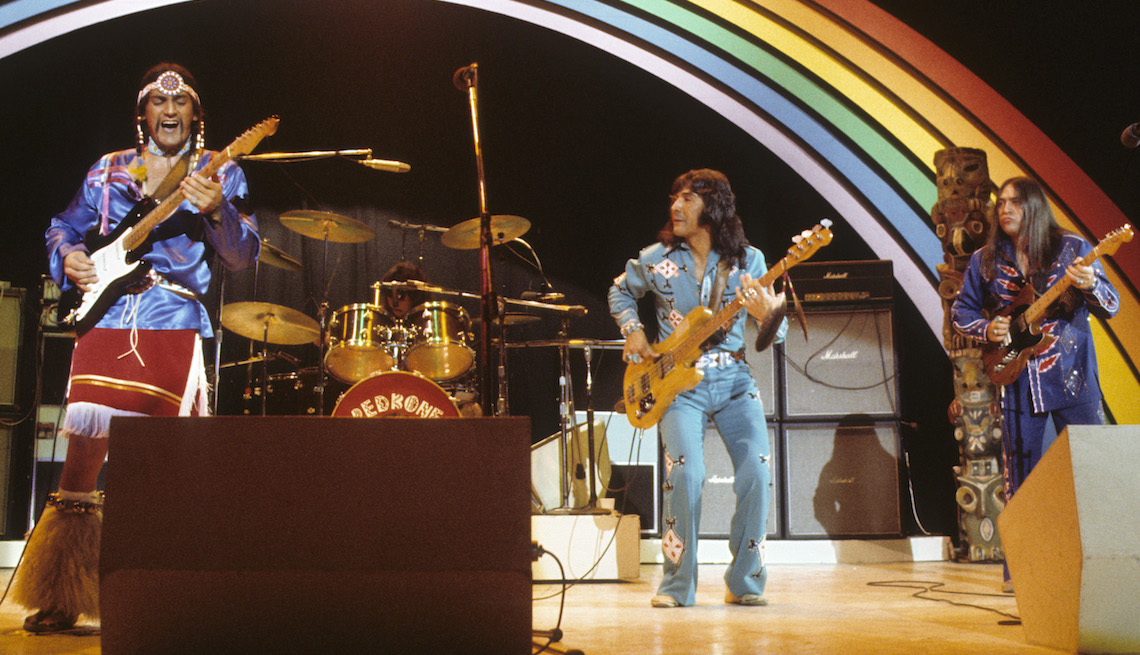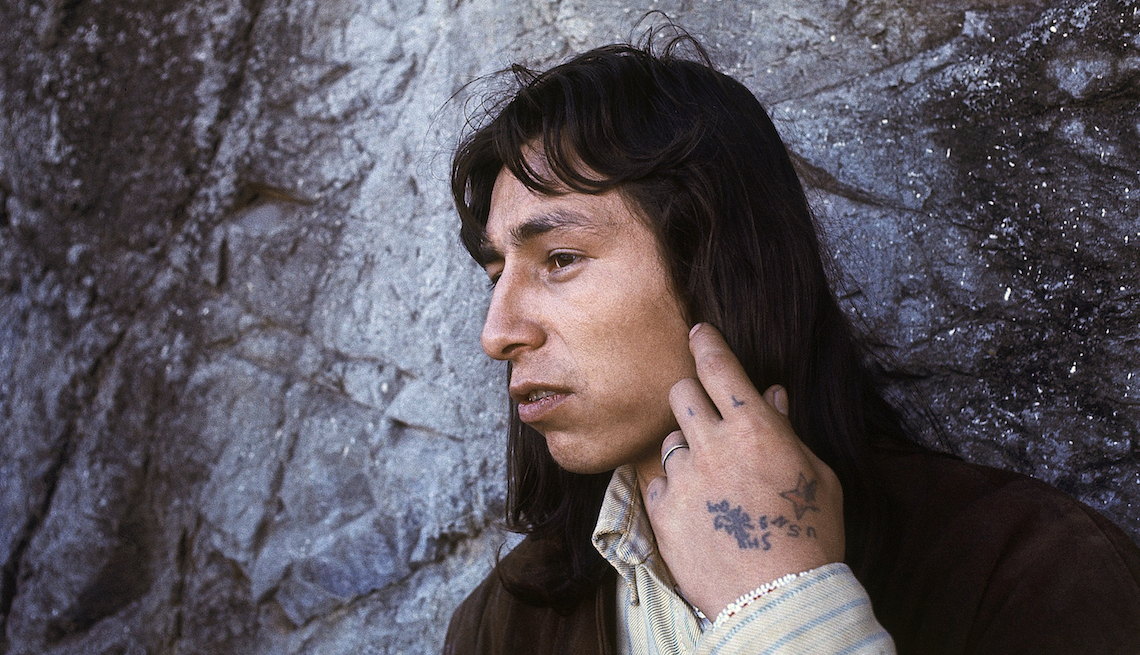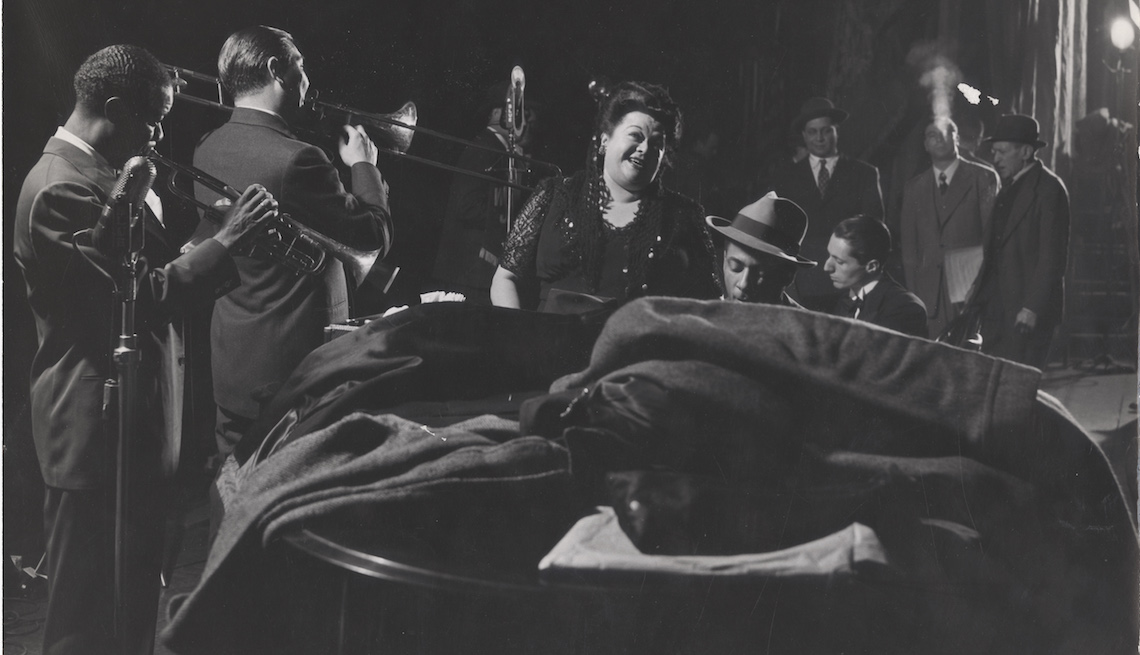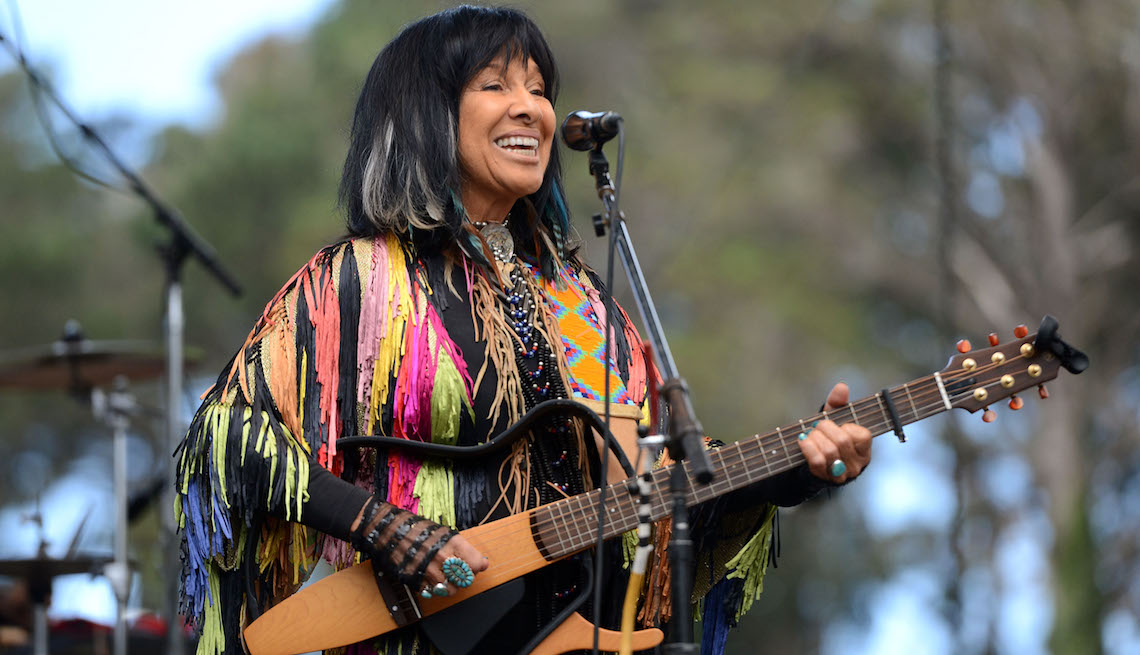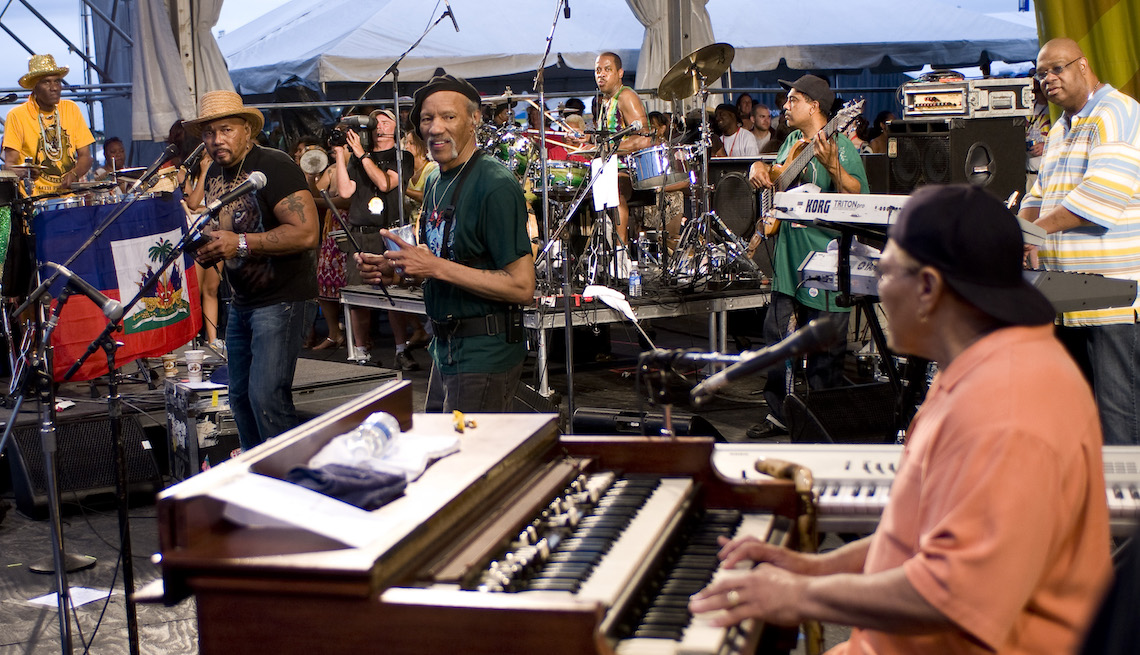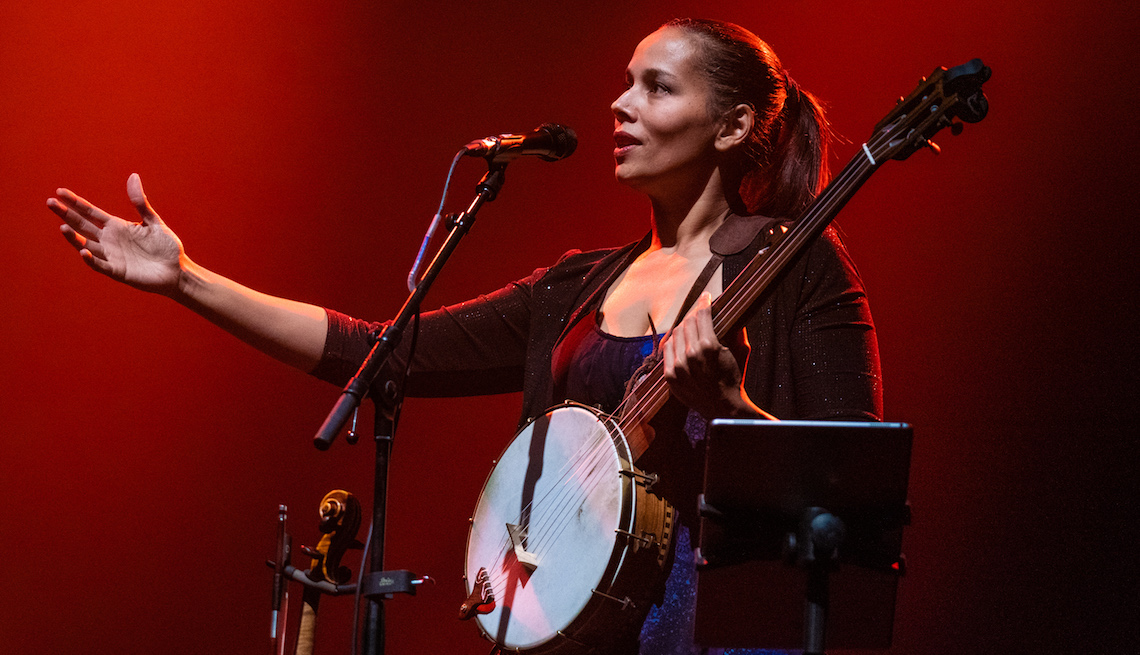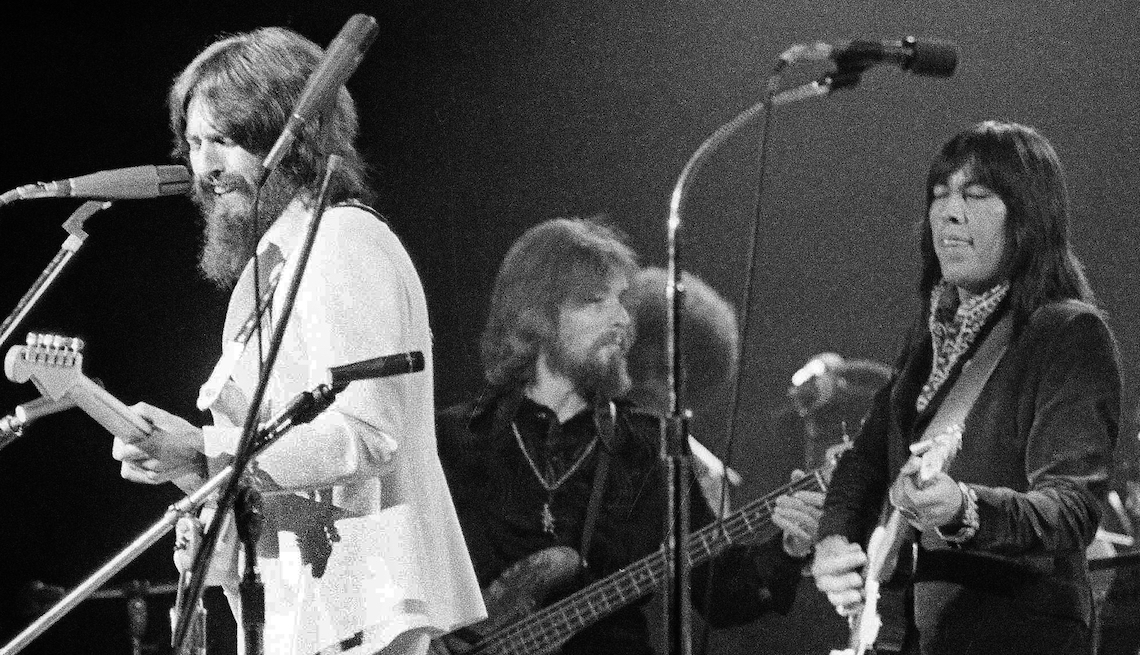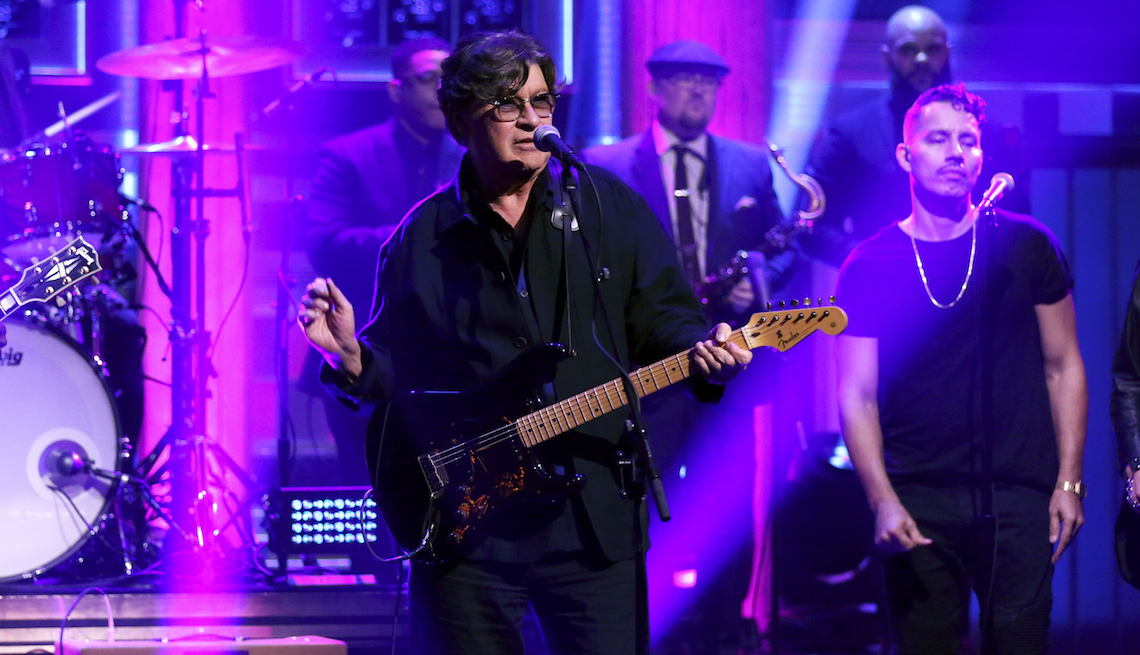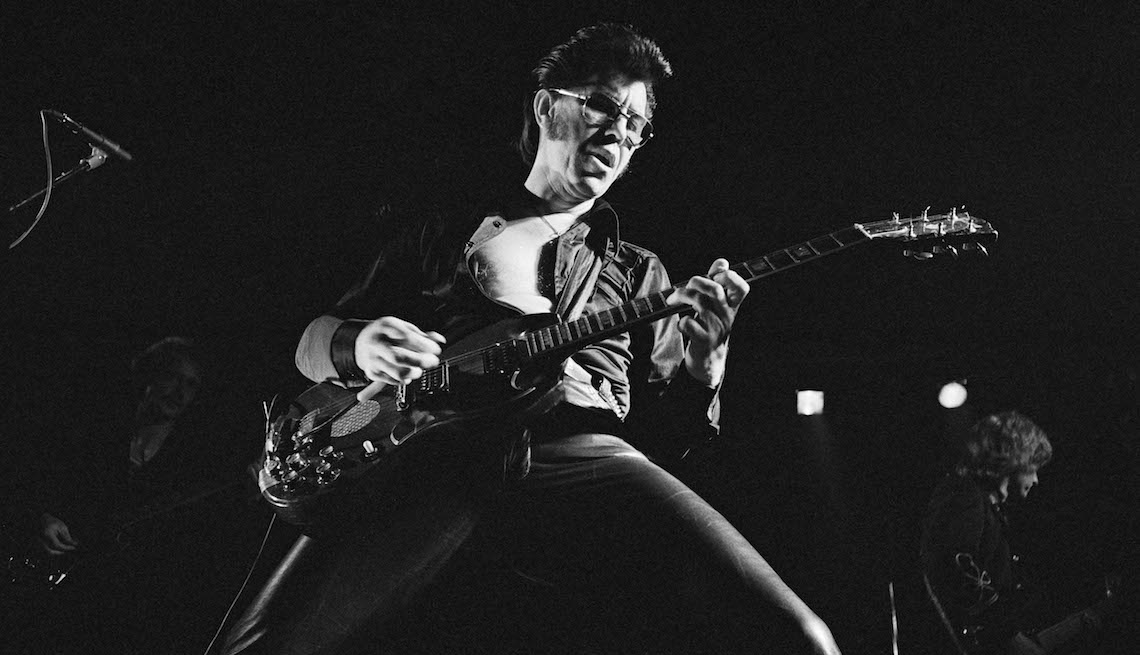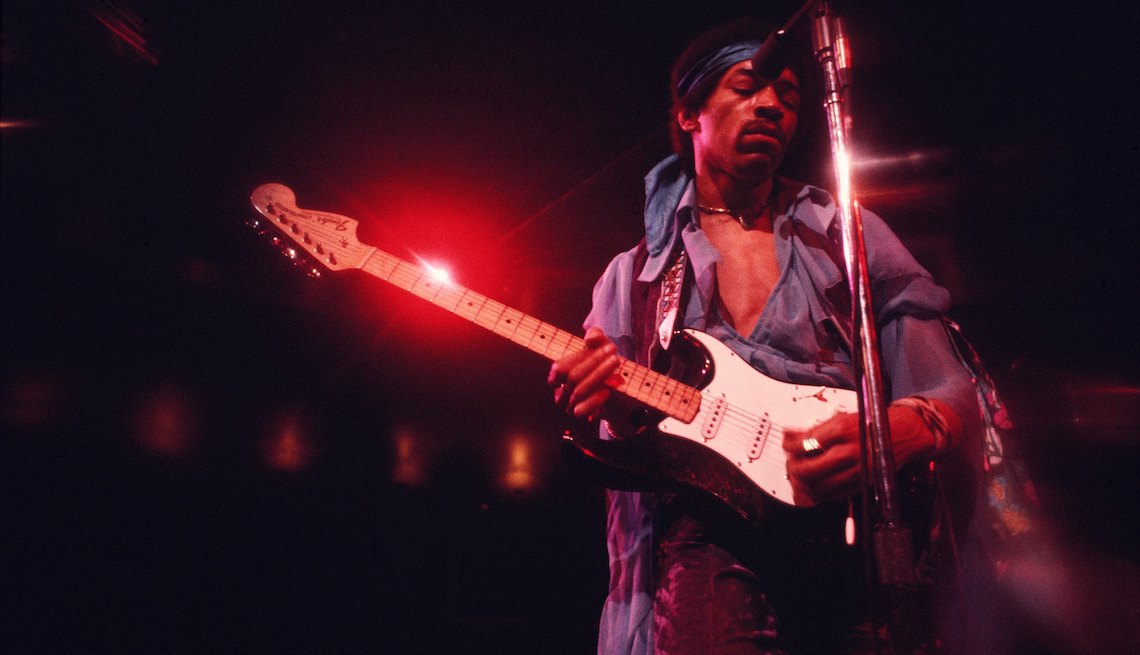Top 10 Native American Rock Stars
Documentary ‘Rumble’ profiles influential musicians with indigenous roots
by Charles R. Cross, AARP, December 3, 2019
The documentary Rumble: The Indians Who Rocked the World — now streaming on Amazon, Google Play, Vudu and YouTube — makes a strong argument that a handful of Native Americans made an oversize contribution to the invention of rock ‘n’ roll.
The ethnicity of these musicians was often missing from their press bios, mirroring a cultural trend that sought to homogenize indigenous cultures within art and music.
Rumble profiles several dozen musicians with native heritage, but here’s a rundown of 10 of the most influential.
- |
- Photos
-
- 1 of
PHOTO BY: ABC Photo Archives/ABC via Getty Images
10. Redbone’s “Come and Get Your Love” may be the most obvious hit by a Native American band, but it’s also just simply a great pop song.
It became a Top 5 hit in 1973.
-
- 2 of
PHOTO BY: Associated Press
9. John Trudell, like Redbone, made his culture central to his music, and he did so over 20 albums.
His posthumous release, 2016’s We Are the Halluci Nation, with A Tribe Called Red, may be his best, though.
-
- 3 of
PHOTO BY: Gjon Mili/The LIFE Picture Collection via Getty Images
Mildred Bailey at the Esquire Jam Session at the Metropolitan Opera House, New York, New York, 1944.
8. Mildred Bailey grew up on the Coeur d’Alene Reservation, but she left to tour the world as a jazz singer, earning the nickname Queen of Swing.
Bing Crosby and Louis Armstrong cited her as one of the greatest jazz singers of all time.
-
- 4 of
PHOTO BY: Scott Dudelson/Getty Images
7. Buffy Sainte-Marie found pop-chart success in the late ’60s.
But her political activism, which the establishment saw as particularly dangerous when native people in that era spoke out, got her banned from radio at the point of superstardom.
-
- 5 of
PHOTO BY: Ebet Roberts/Getty Images
(L-R) Cyril, Aaron, Charles, and Art Neville of The Neville Brothers performing at the 40th Anniversary of The Jazz and Heritage Festival held in New Orleans, Louisiana on May 3, 2009.
6. The Neville Brothers are often categorized only as African American musicians.
In Rumble they detail how their Choctaw heritage and the rich tradition of New Orleans Mardi Gras Indians were essential to their artistry.
-
- 6 of
ADVERTISEMENT
-
- 7 of
PHOTO BY: Lorne Thomson/Redferns/Getty Images
Rhiannon Giddens performs at The Royal Festival Hall on November 22, 2019 in London, England.
5. Rhiannon Giddens, best known for her work with the Carolina Chocolate Drops, also reflects what is often a duality of African and Native American cultures in U.S. history and music.
Giddens brings an ethnomusicologist approach to her concerts, which are not to be missed.
-
- 8 of
PHOTO BY: Jim Wells
In this Aug. 1, 1971 file photo, Jesse Ed Davis, right, a guitarist of Kiowa and Comanche ancestry, performs with George Harrison, left, formerly of the Beatles, at the Concert For Bangladesh at Madison Square Garden in New York City.
4. Jesse Ed Davis backed up Eric Clapton, Bob Dylan, George Harrison, John Lennon, Taj Mahal and others.
But his guitar playing on Jackson Browne’s “Doctor My Eyes” is all the evidence you need that he was a genius player.
-
- 9 of
PHOTO BY: Andrew Lipovsky/NBCU Photo Bank/NBCUniversal via Getty Images
3. Robbie Robertson also backed up Dylan and, with the Band, became one of the most famous musicians of the ’70s.
Robertson is all over Rumble, as both a subject and an astute commentator on the role of Native American culture within pop.
-
- 10 of
PHOTO BY: David Warner Ellis/Redferns
2. Link Wray’s song “Rumble” also ends up as the documentary’s title. Rumble begins with Robertson’s discussing the song, but even Robertson didn’t know when he was young that Wray was Native American.
Wray’s 1958 hit invented the power chord, which shaped so much of rock to follow. It also became one of the first instrumentals that radio banned because of fears it would cite juvenile delinquency.
-
- 11 of
PHOTO BY: Walter Iooss Jr./Getty Images
1. Jimi Hendrix learned to play Wray’s “Rumble” as a teen. Hendrix was proud of his Native American roots and wore a beaded vest onstage at Woodstock.
Those who write the history of rock ‘n’ roll often ignore that detail, which is part of the reason Rumble is both a joy to watch for any music lover and also an important recasting of history.
Charles R. Cross, who has written nine books, is the author of a 2005 biography on Jimi Hendrix and two books on Kurt Cobain.

